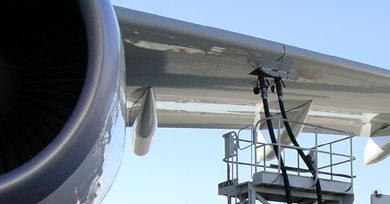Association of Asia Pacific Airlines (AAPA) director general Andrew Herdman says rising oil prices are expected to hit airline profitability as heavy competition limits carriers’ ability to lift ticket prices.
While airlines in the region, and indeed globally, are still forecast to post healthy profits for the period ahead, Herdman expects the overall picture to be lower than in previous years.
“The pressure in Asia based on the results we’ve seen so far this year are that it’s been very difficult to pass on the full cost impact and so we are seeing margins come down and profitability pullback as a result,” Herdman told reporters at the AAPA Assembly of Presidents in Jeju, South Korea on Thursday.
“Overall, I still expect Asian airlines in aggregate to make substantial profits but it seems pretty clear that it will be lower than the levels we’ve seen in previous years.”
The International Air Transport Association (IATA) jet fuel monitor shows the jet fuel price was at US$95.73 per barrel in mid-October, up about 40 per cent from a year earlier. Fuel is typically an airline’s second-biggest cost after staff.
While airlines have been reporting higher passenger numbers and cargo volumes, Herdman said other indications such as margins and yields – an industry measure of average airfares per passenger – were yet to reflect the impact of rising oil prices.
And although airfares were “edging upwards” and probably needed to go higher to reflect the increase in fuel prices, Herdman said ticket prices overall remained very affordable.
“That rise in oil prices has continued relentlessly this year and that’s been biting airlines depending on the extent to which they are hedged,” Herdman said.
“The question has been how much of the fuel cost can be passed on in the average fares and that varies dramatically by market. But in general there is a lag and margins have been under pressure,” he observed.
“From a pricing point of view I’m confident that consumer demand isn’t going to be put off by the fact that higher fuel prices are being put into the fares,” Herdman continued.
“We know from recent experience that when oil prices were high and fares had to be higher, we still saw very strong growth. I think affordability, even with oil prices in this range or slightly higher, is not an issue.”
IATA said in June it expected airlines around the world to collectively post a US$33.8 billion profit in calendar 2018, down from the US$38 billion in profits earned in 2017.
Looking at some of the results from around the region, in July, Singapore Airlines (SIA) cited rising fuel prices when it reported a 59 per cent decline in net profit for the three months to June 30 amid increased passenger numbers and cargo volumes for the quarter.
And in August, Cathay Pacific said higher fuel costs offset gains from improved passenger and cargo demand and its transformation program as it posted a narrowing net loss for the six months to June 30.
Oceania’s three biggest carriers have also warned of the potential impact of higher fuel prices in recent times.
Despite posting an 18 per cent lift in net year profit, Qantas said its total fuel bill for the current year was expected to increase about $690 million, or 20 per cent, to $3.92 billion.
Qantas chief executive Alan Joyce has described it as a significant increase.
However, he was confident the airline would be able to substantially recover those increased costs due to the strength of the airline group’s forward bookings and continued focus on transformation.
Virgin Australia said in August it expected fuel costs to rise 22 per cent in 2018/19 and chief executive John Borghetti the airline had to manage those increases through cost reductions in other areas.
Asked if ticket prices would have to rise, Borghetti said: “You never say you don’t translate some of those costs into pricing, at some point you have to so we will just monitor it very carefully.
“But very importantly, the overriding factor here is you’ve got to remain competitive. I think the market is very competitive still,” he said…



